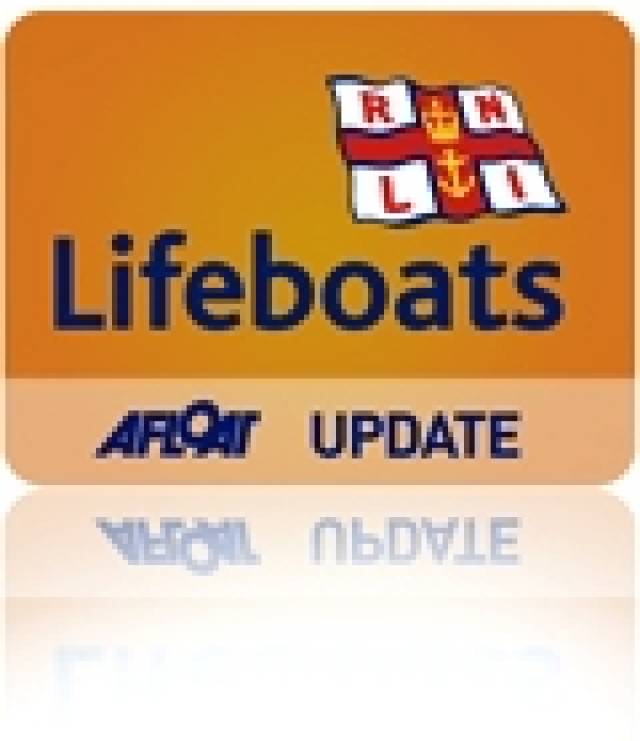#rnli – Lough Derg RNLI Lifeboat launched twice at the weekend to assist two separate cruisers that had run aground.
The lifeboat launched earlier today to assist five people in difficulty after their 43ft cruiser grounded on rocks inside The Goat Road, midway down the eastern shore of Lough Derg.
On Saturday night, May 25, the Lifeboat was requested to assist 6 people when their 33ft grounded on rocks close to Terryglass, at the northern end of Lough Derg.
At 14.20hrs on Sunday afternoon, May 26, Valentia Coast Guard requested Lough Derg RNLI Lifeboat to launch to assist five people, after their 43ft cruiser grounded on rocks inside The Goat Road, on the eastern shore of Lough Derg.
The lifeboat launched at 14.30hrs with Helm Gerry O'Neill, Robbie Garland and Tom Dunne on board. Winds were south westerly, Force 4. The lifeboat was alongside the casualty vessel at 15.00hrs. An RNLI crew member was transferred to their boat; he found all five people to be safe and unharmed and asked them to put on their lifejackets. After it was established that the vessel was not holed, the RNLI crew set up for a tow, and the lifeboat took them off the rocks and out into safe water. Once in safe water and all controls were confirmed in working order, the cruiser made way, in company with a lake cruiser, under it's own power to it's next destination. The Lifeboat returned to station and was ready for service again at 16.15hrs.
Lough Derg RNLI Helm Gerry O'Neill advises boat users to 'be attentive to the navigation marks when fishing from a cruiser, as, with wind shifts, it is easy to drift inside the mark and into shallow water.' Lough Derg RNLI crew member Robbie Garland advises water users to 'always wear their lifejacket'.
On Saturday night the Lifeboat was requested to assist 6 people when their 33ft grounded on rocks close to Terryglass, at the northern end of Lough Derg.
At 20.55hrs on Saturday night, May 25, Lough Derg RNLI Lifeboat was requested by Valentia Coast Guard, to go to the assistance of six people on board a 33ft cruiser, aground close to Terryglass at the northern end of Lough Derg. There was a light southerly breeze, with good visibilty.
When the call was received the lifeboat was already afloat on exercise with Helm Lian Knight, Tom Dunne and Jason Freeman on board. At 21.17hrs the lifeboat arrived on scene. An RNLI crew member boarded the cruiser and after reassuring the six people on board, checked the vessel for damage. Once satisfied that the boat was not holed, the lifeboat took the cruiser off the rocks and out into deep water. The cruiser proceeded under her own power to Terryglass Harbour.
The lifeboat returned to Station and was ready for service again at 22.30hrs
































































